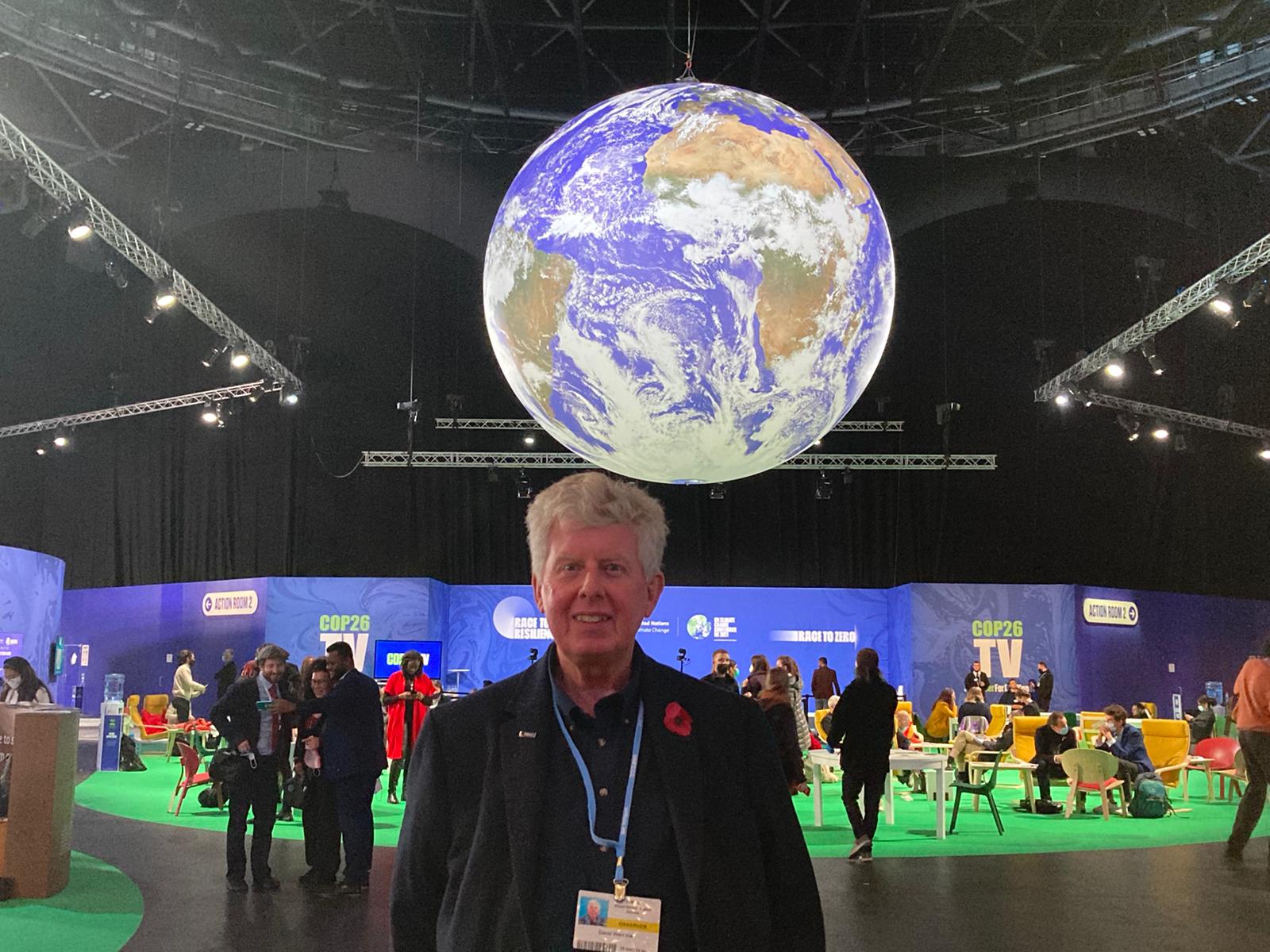

Conclusion from COP26
Formally the COP is the highest working level UN decision making body on climate change at which all the world’s 197 Governments are represented. It meets yearly to progress the global response to the threat of climate change. It first met in Berlin in 1995 and has led to two major treaties: the Kyoto Protocol in 1997 at which developed countries agreed to take on specific emission reduction targets and the Paris Agreement of 2015 at which a new comprehensive agreement was reached in which all countries would have a role in tackling climate change and with a key aim of keeping the global rise in temperatures to well below 2 degrees Celsius above pre-industrial levels and to pursue efforts to keep it below 1.5 ºC. To do the latter the Inter-Governmental Panel on Climate change has concluded that global greenhouse gas emissions need to be reduced by about 45 per cent by 2030 and to reach net zero by 2050.
The first challenge for the COP was that emissions are still projected to increase by 2030 and a 2021 UNEP assessment (GAPS Report) has concluded that current commitments countries had made to reduce emissions before the COP are likely to lead to a temperature rise of 2.7 ºC by 2100 and so are clearly insufficient. The UK Presidency aim was to seek greater commitments from countries on emission reductions and to get political agreement for several practical measures which would lead to reductions.
The second big challenge for the COP was to get agreement between very diverse economies ranging from the wealthy industrialised countries, the rapidly developing developed countries, major fossil fuel producers, countries whose very existence is threatened by climate change and large group of relatively poor developing countries who have low emissions, but which are at great risk from climate change. This meant a tension between the major emitters, both developed and developing and vulnerable developing countries with wrangling over financial support from the developed to the developing world.
Thirdly the COP had to agree a suite of technical decisions which completed the Paris Rule Book which would enable the Paris Agreement to be fully implemented. Although not headline grabbing many of these decisions were agreed successfully.
The political outcome
The headline Glasgow Climate Pact is an agreement to make progress on several fronts based on items that had been promoted earlier in the conference at the Heads of State session, to which various countries pledged support. The Pact includes agreement to phase out inefficient fossil fuel subsidies and the use of coal. In the closing stages of the conference the agreement to phase out coal was watered down at the request of India, supported by China, to a phase down of coal, much to the annoyance of the vulnerable developing countries and the progressive developed countries. The leader’s session led to pledges to reverse deforestation and reduce methane emissions by 30 per cent by 2030. Agreement was reached to meet the commitment on financial support for developing countries of $100 billion dollars per year by 2023, and to double the adaptation fund by 2025. A major push by developing countries for compensation for climate impacts (loss and damage) made limited progress, though a commitment was made for it to be revisited in a high-level dialogue by 2025. Furthermore, several countries, most notably India, announced new emission reduction commitments (Nationally Determined Contributions (NDCs) commitments just before the conference on the emission reduction plans. Those who have not yet submitted new NDCs will have to do so by next year. For a fuller read out from the conference see https://enb.iisd.org/Glasgow-Climate-Change-Conference-COP26-summary.
What does it all mean for the climate? Various estimates have been made by analysts on the impact on the level of warming. The most pessimistic suggest that temperatures could still rise to 2.4 ºC above pre-industrial levels, but if all broad aims were to be realised such as reaching net zero by 2050 to 2070, some have suggested an optimistic temperature limit of 1.8 ºC. There is a lot of discussion about whether keeping below 1.5 ºC is still achievable. The conclusion for the time being is that we are edging towards achieving 1.5 ºC but we have very little time to make the changes required to get on that trajectory.
Practical signs of hope
Along with the UN part of the conference there was a parallel process run by the Presidency showcasing practical moves that are being undertaken across many different sectors worldwide by commercial and public entities to reduce emission and follow a more sustainable course.
The message from wider society is increasingly positive. Al Gore indicated that renewable energy costs have fallen so much that they are now making some fossil fuel plants uneconomic. The prospect for a massive increase in "green" hydrogen over the next ten years is considerable. The involvement of financial institutions and investment bodies is a sure sign that change is on the way.
Major car makers are gearing up for a transition to electric vehicles by the 2030s, making the point that the transition will be faster if related charging infrastructure is rolled out promptly. The aviation industry is actively looking at low or zero emission flying, using variously sustainable fuels, hydrogen, and even electric planes.
Looking to the longer-term scientists from the nuclear fusion programme ITER are bullish about the prospects for a commercial reactor by possibly 2035. It would not be prudent to rely on this, but it does indicate that a wide range of organisations and economic sectors recognise that climate change must be dealt with, and that business need to be innovating and transitioning to a sustainable future.
Conclusion
My overall assessment of COP 26 is that there is some ground for cautious optimism. The direction of travel is clear and there is a growing group of countries who are prepared to lead the charge to a low emission future. At the same time there is a growing awareness in the wider world of the need for rapid change and many are not waiting to be told what to do but are taking the lead themselves. Nevertheless, much more political will and cooperation will be required to enhance the ambition for rapid emission reductions over the coming decade to avoid dangerous levels of climate change.
About the author
David Warrilow was a senior government science advisor and international negotiator on climate change and environmental issues for over 20 years.
He led the UK delegations to the Intergovernmental Panel on Climate Change (IPCC) and was the science lead for the UK and EU at the United Nations Framework Convention on Climate Change (UNFCCC). Prior to this, he undertook research at the Met Office on observing systems, hydrometeorology, and climate modelling of land surface processes.
Since retiring he has worked closely with the Royal Meteorological Society and became its President between 2018 and 2020. David continues to write and speak about climate change issues.




